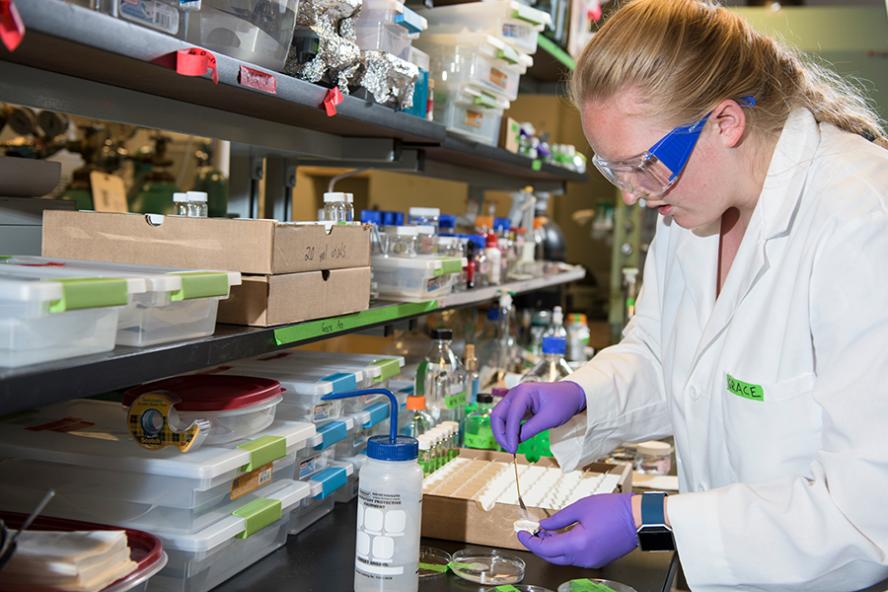Filtering clean drinking water

The Summer Scholars program provides rising juniors and seniors with the opportunity to conduct funded independent research projects as undergraduates. The 2016 summer scholars came from across Tufts schools, departments, and disciplines. The eight engineering majors who received funding spent the summer working with their faculty advisors and, during program support events organized by the Office of Undergraduate Education, rubbing shoulders with their peers from the School of Arts and Sciences. From automobile emissions to zwitterions, their summer research projects sought solutions to many of the biggest problems we face today.
By Lynne Powers
Grace Aro, E18, hit a hurdle on her project in July: a heat wave.
Aro was working in faculty advisor Assistant Professor Ayse Asatekin's lab. She planned to create co-polymer membranes with zwitterions, which are ions that have a positive charge on one end and negative on the other. Ultimately, she wanted to find out if these zwitterionic membranes could be used to treat lake and river water and make it drinkable.
“There are so many people in the world who don't have access to clean drinking water, and that's a big issue,” explains Aro. “Looking at alternative ways that we can treat water so that more people have access to clean drinking water is something that is universally really important.”
First, though, Aro needed to create the membranes. That's where the heat wave came in. “Humidity,” Aro says, “is the enemy of membrane-making.” She had to be nimble and rearrange the sequence of her project, working on other tasks while waiting for the humidity to drop. Once it finally did, she made a polymer solution and coated it on top of membrane sheets to create a thin, highly selective membrane that could catch everything larger than a nanometer that was unwanted, the foulants, and let the rest of the solution through. The next step was to run water through the membrane sheets for five hours, then run the foulant through for 24 hours, and then the water again for five hours. That allowed Aro to measure both the water flow rate, demonstrating whether the membrane had clogged, and the rejection, which was the concentration of a foulant compound in solution that had been stopped by the membrane. She tested both commercially purchased control membranes and her zwitterionic test membranes, using yeast (to simulate algae) and other organic compounds as the foulants in separate tests.
Aro and other students working in Asatekin's lab go through the entire life cycle of the process, from start to the hopeful finish of handing the membrane over to industry: synthesizing the polymer, creating the membrane, testing the membrane, characterizing the properties, and testing it in an application. Many labs, Aro noted, purchase commercial membranes and would not have afforded her the same opportunities.
So far, preliminary results are promising. Most commercial membranes quickly become clogged with organic matter when water is filtered through them. The zwitterionic membranes created in Asatekin's lab are different. They're highly polar and hydrophilic, making organic material less likely to stick. Aro found, in her experiments, that the membranes made in the lab seemed to clog less and have equal the rejection capabilities of commercial membranes.
While Aro has moved on to other projects, the work that she started this summer will continue. The lab plans to test how the membranes perform when filtering a mixture of these compounds — more closely mimicking real-life conditions. With lead contamination in Flint, Michigan still in the news, students will also be testing zwitterionic membranes' ability to remove lead from a solution.
Aro, who has been working in Asatekin's lab since she was a sophomore, is feeling excited about the work ahead of her. “It's cool to think that something we have developed might be able to be used in the real world,” she says. “I have a new appreciation for how long it really takes to develop something and test it.”
Related Links
Modeling air pollution in Boston
Defying gravity with an inverted pendulum
Department:
Chemical and Biological Engineering